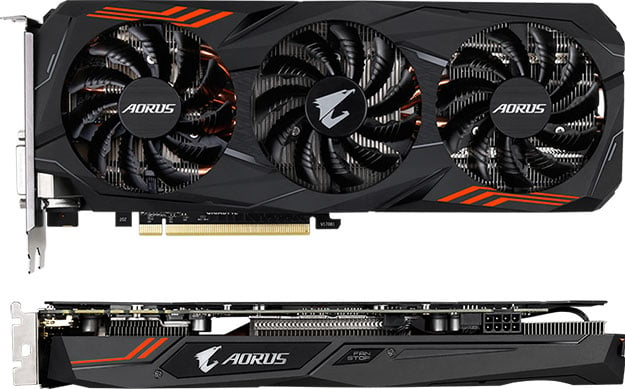Gigabyte Unveils GeForce GTX 1070 Ti AORUS With One-Click Overclocking

For whatever reason, NVIDIA does not want its hardware partners overclocking the GeForce GTX 1070 Ti at the factory. This is probably to prevent closing the performance gap between (and cannibalizing sales of) it and the GeForce GTX 1080, though interestingly enough, NVIDIA said it designed the 1070 Ti with overclocking in mind. The only caveat is you have to do it yourself, and Gigabyte is making it easy with its new AORUS GeForce GTX 1070 Ti graphics card.
Out of the box, the AORUS GeForce GTX 1070 Ti sticks to reference clocks, as all 1070 Ti cards do, with a 1,607MHz base clock and 1,683MHz boost clock. However, using the company's AORUS Graphics Engine software, owners flip the switch from Gaming mode to OC mode with a single click, which boosts the base clock to 1,683MHz and boost clock to 1,771MHz boost clock, both of which Gigabyte guarantees. In essence, it's a workaround to NVIDIA's annoying restriction.

This particular SKU (GV-N107TAORUS-8GD) is built with faster clocks in mind, even though Gigabyte is not allowed to push speeds past reference straight out of the box. On the card's product page, Gigabyte notes it is capable of "extreme overclocking" thanks in part to its 6+2 power phase design, which offers stable power delivery. And while not specifically stated, we imagine Gigabyte binned the GPU and memory, selecting parts that have been tested to run at faster-than-reference speeds.
Gigabyte also equipped this card with a beefy Windforce 3X cooling solution. Like the Windforce 2X that is found on some of Gigabyte's other cards, such as its custom Radeon RX Vega 64 Gaming OC 8G, the Windforce 3X uses specially designed fans with grooved, triangular fin fan blades. In this case, there are three of them blowing air over a tri-sectioned aluminum heatsink that runs the length of the card.

Four pure copper heatpipes snake through the heatsinks and flatten out to make direct contact with the GPU. This allows for better heat transfer. The heatpipes also touch a large metal baseplate covering the VRAM module to keep supplementary components cool. And on top of it all, there's a copper backplate on the backside of the GPU, so it's squished in copper.
Gigabyte tops everything off with its RGB Fusion LED lighting. Users can cycle through 16.7 million color options and apply various effects.
There is no word yet on when this card will be available or for how much.

